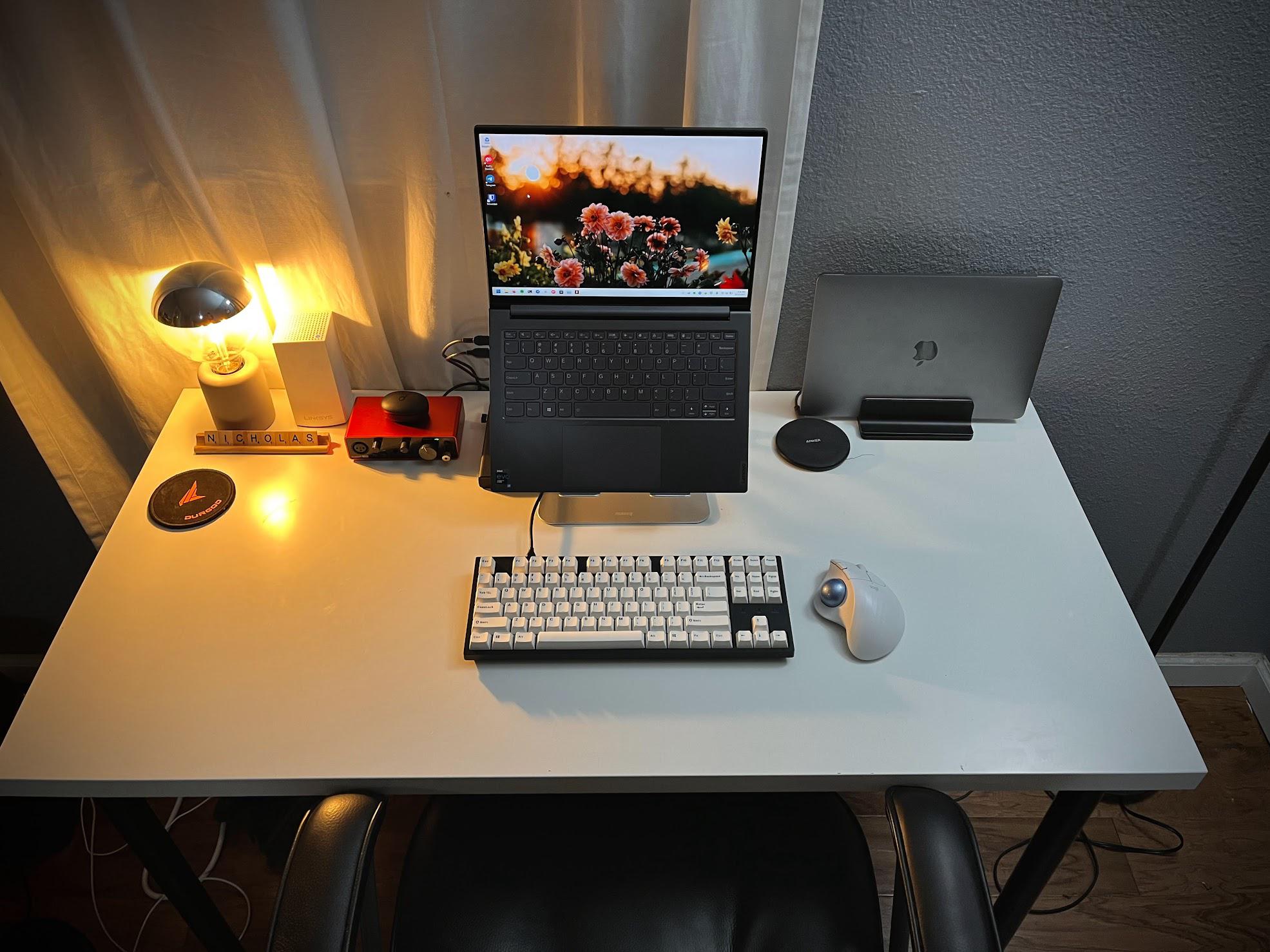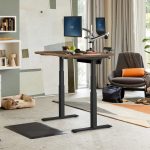Introduction: The Foundation of a Productive Workspace
In today’s digital age, the home office has become a sanctuary for many professionals seeking balance between work and personal life. With laptops being the portable workhorses they are, complementing them with an external monitor elevates the workspace, transforming it into a productivity powerhouse. This article delves into the art of crafting a desk setup that not only optimizes your workflow but also nurtures creativity and comfort. From selecting the right equipment to arranging your workspace for maximum efficiency, we explore the essential tips to make your home office conducive to focused, effective work.
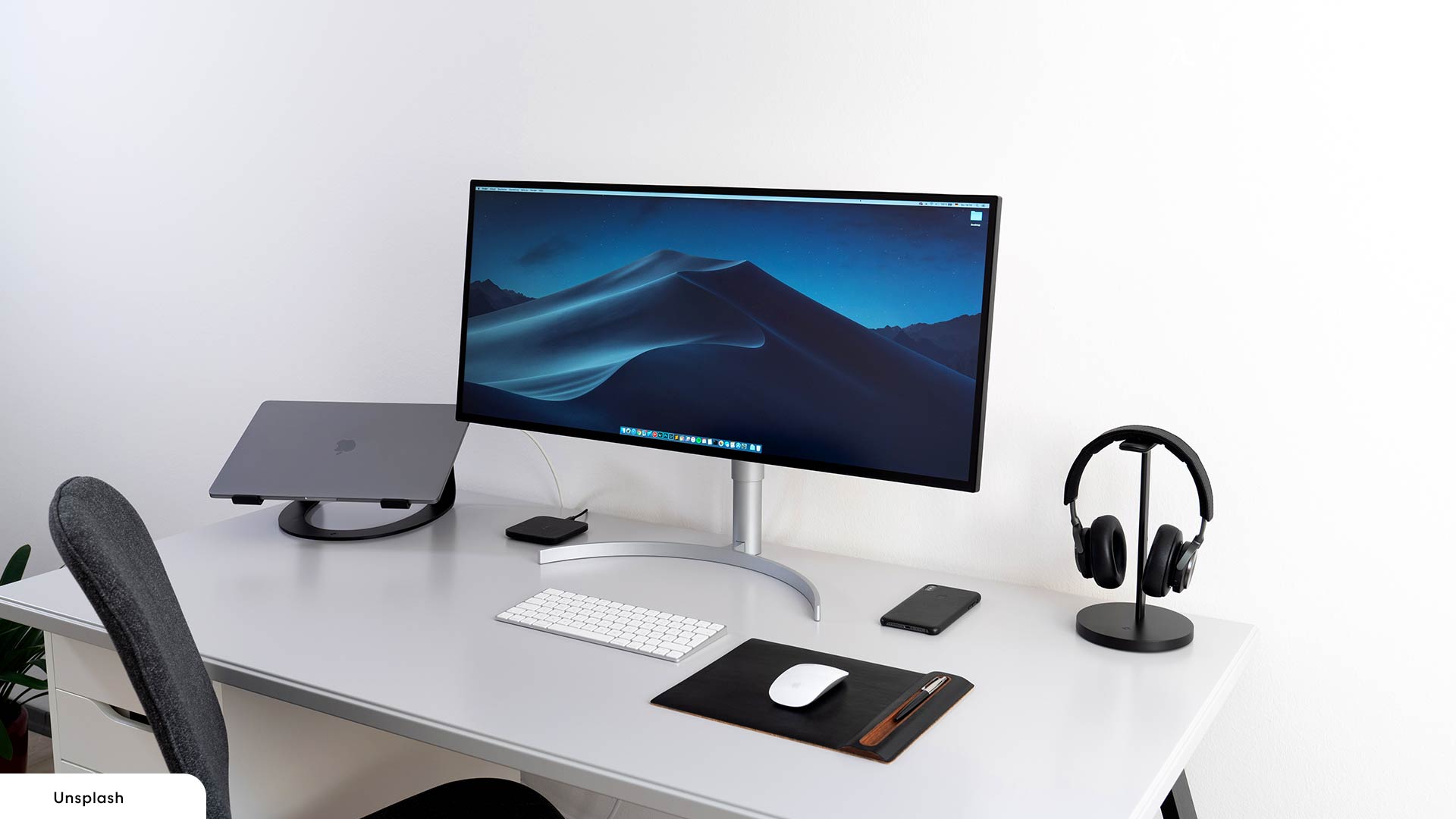
Choosing Your Equipment: Harmonizing Laptop and Monitor
At the heart of any efficient desk setup is the careful selection of hardware. When pairing a laptop with a monitor, consider resolution, size, and connectivity. Opt for a monitor with at least Full HD resolution (1920×1080 pixels) to ensure crisp visuals that won’t strain your eyes during extended work sessions. A 24” to 27” monitor is a popular choice, providing ample screen real estate without overwhelming a typical home office desk. Furthermore, ensure your laptop has the necessary ports—HDMI, DisplayPort, or USB-C with video output capabilities—to connect seamlessly to the external display. Investing in a high-quality monitor stand or arm can also elevate your setup, literally and figuratively, allowing for easy adjustment of height and angle to reduce neck strain.
Cable Management: Taming the Tangled Mess
A clutter-free desk translates to a clutter-free mind. Managing cables effectively is crucial to maintaining a clean and organized workspace. Start by using cable ties or sleeves to group wires together neatly. Consider routing cables through desk grommets or along cable trays mounted under the desk surface. For wireless peripherals like a keyboard and mouse, choose devices with reliable connectivity to minimize desktop clutter further. Not only does this approach enhance aesthetics, but it also simplifies cleaning and reduces the risk of accidental disconnections during intense work sessions.
Ergonomics: Designing for Comfort and Efficiency
Ergonomics plays a pivotal role in maintaining health and productivity over long work hours. Position your monitor at eye level to avoid tilting your head up or down, reducing neck strain. The top of the monitor should align with your natural gaze when sitting straight. Your chair should be adjustable, allowing you to maintain a 90-degree angle at your knees and elbows, with feet flat on the floor. Incorporate an ergonomic keyboard and mouse to prevent wrist strain, and consider using a standing desk converter to alternate between sitting and standing positions throughout the day, promoting better posture and circulation.
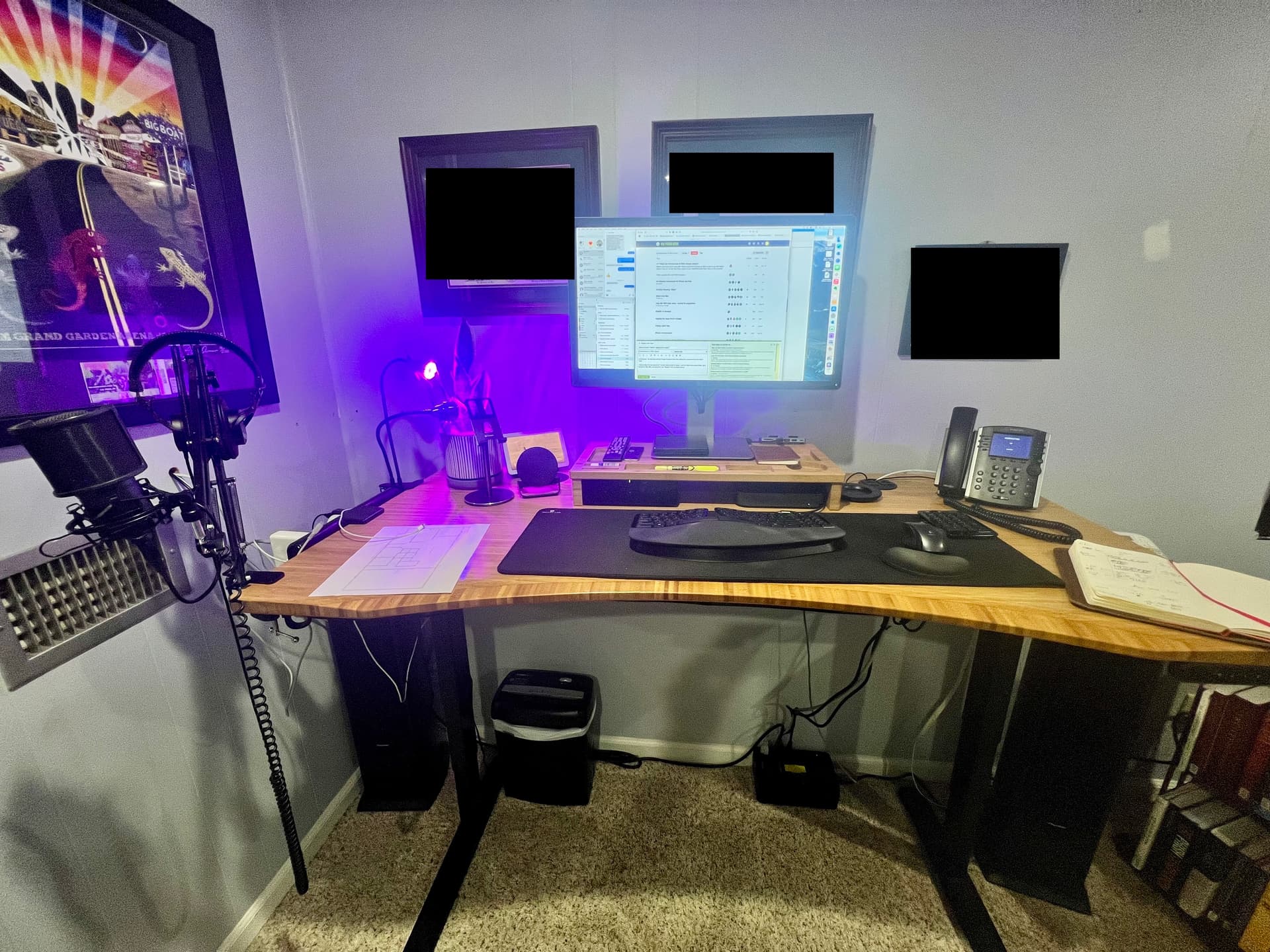
Lighting: Illuminating Your Workspace for Optimal Vision
Proper lighting is often overlooked yet vital for minimizing eye fatigue and enhancing focus. Natural light is ideal, so position your desk near a window if possible, but avoid direct sunlight that can cause glare on your screens. Supplement with task lighting such as a desk lamp, placing it to the side opposite your dominant hand to avoid casting shadows on your work area. Ensure the lighting is soft and diffused, avoiding harsh overhead lights that can cause glare or reflection on your monitors.
Personal Touches: Infusing Creativity and Inspiration
While functionality is paramount, do not underestimate the power of personalization in fostering a productive environment. Surround yourself with items that inspire creativity and evoke positive emotions. This could be artwork that motivates you, a small potted plant to bring life to your space, or a vision board showcasing your goals. Personal mementos, family photos, or souvenirs from travels add warmth and remind you of why you work hard. Remember, a workspace that reflects your personality encourages a sense of ownership and enjoyment, contributing to a more productive mindset.
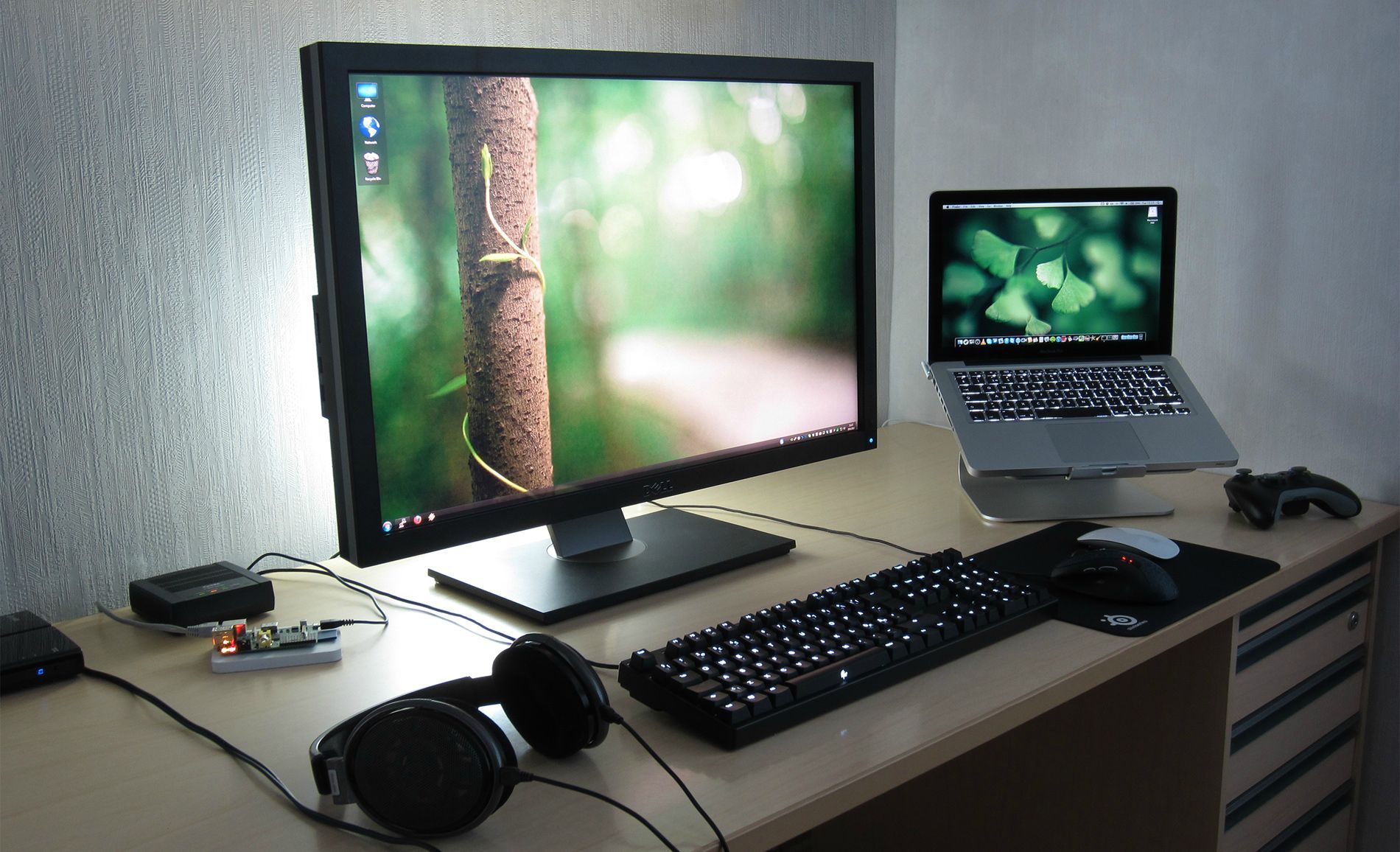
Storage Solutions: Keeping Your Workspace Organized
Incorporating smart storage into your desk setup is essential for maintaining order and maximizing productivity. Utilize drawer organizers for stationery, keeping pens, notepads, and Post-its within reach but neatly arranged. Consider a filing cabinet or a set of desktop file holders for important documents, ensuring that bills, contracts, and project papers are easily accessible. Floating shelves above your workspace can house books, binders, or decorative elements while keeping the desk surface clear. Don’t overlook the potential of vertical space; a wall-mounted pegboard can hold frequently used tools or accessories, adding both function and visual interest.
Acoustic Considerations: Soundscaping for Focus
The acoustic environment of your workspace can significantly impact concentration levels. If you’re in a noisy area, invest in noise-canceling headphones to create a quiet zone for deep work. Alternatively, soft background music or white noise can help mask distracting sounds. For those who take part in frequent video calls, adding acoustic panels to walls or using a soundproof curtain can improve audio quality and privacy during meetings. Plants, rugs, and bookshelves also act as natural sound absorbers, making your space feel more comfortable and less echoey.
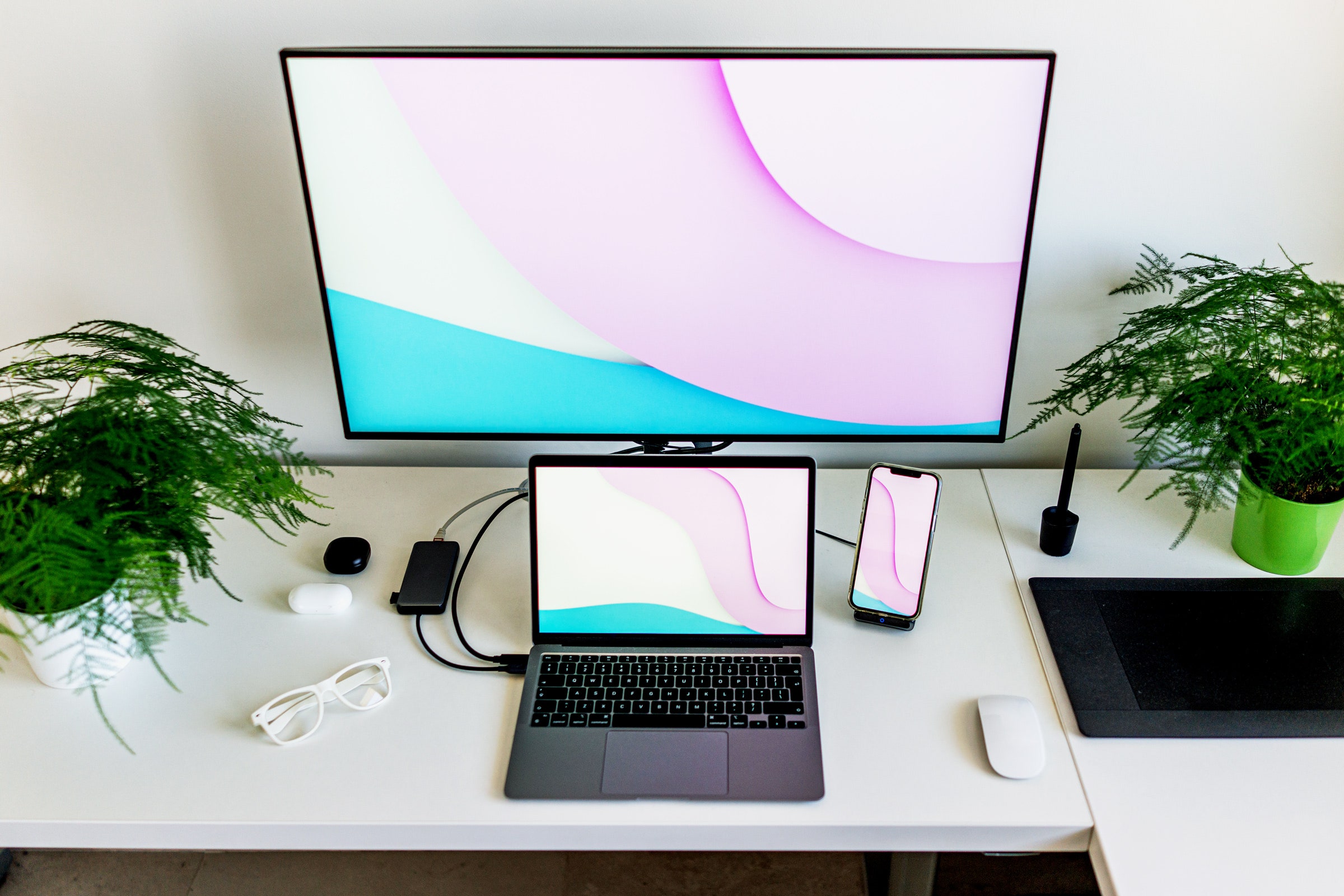
Power Management: Streamlining Electricity Access
A tangle of power cords not only looks untidy but can also lead to difficulties in identifying which plug belongs to which device. Implement a surge-protected power strip with built-in cable management features or a desk-mounted power hub to keep outlets accessible and organized. Consider using adhesive cable clips or a desk grommet with a cable pass-through to guide wires discreetly to their power source. This way, you can quickly plug in or unplug devices without having to fish around under your desk.
Temperature Control: Maintaining a Comfortable Climate
The temperature of your workspace can affect your comfort and, subsequently, your productivity. Invest in a small desk fan or a space heater, depending on your climate needs, to maintain a comfortable working environment. If possible, choose a room with good air circulation and natural ventilation options. Additionally, dressing in layers allows you to adjust to temperature fluctuations throughout the day. Remember, a workspace that’s too hot or too cold can lead to discomfort and decreased focus.

Conclusion: Crafting Your Ideal Workspace
Transforming your home office into a productivity haven requires thoughtful consideration of equipment, ergonomics, lighting, and personal touches. By selecting the right monitor to pair with your laptop, managing cables efficiently, prioritizing ergonomics for comfort, optimizing lighting, and infusing your workspace with personal inspiration, you create an environment that not only enhances productivity but also nurtures well-being. Remember, your desk setup is a reflection of your workstyle and a tool to help you achieve your professional goals. With these tips, embark on crafting a space that empowers you to perform at your best, every day.
